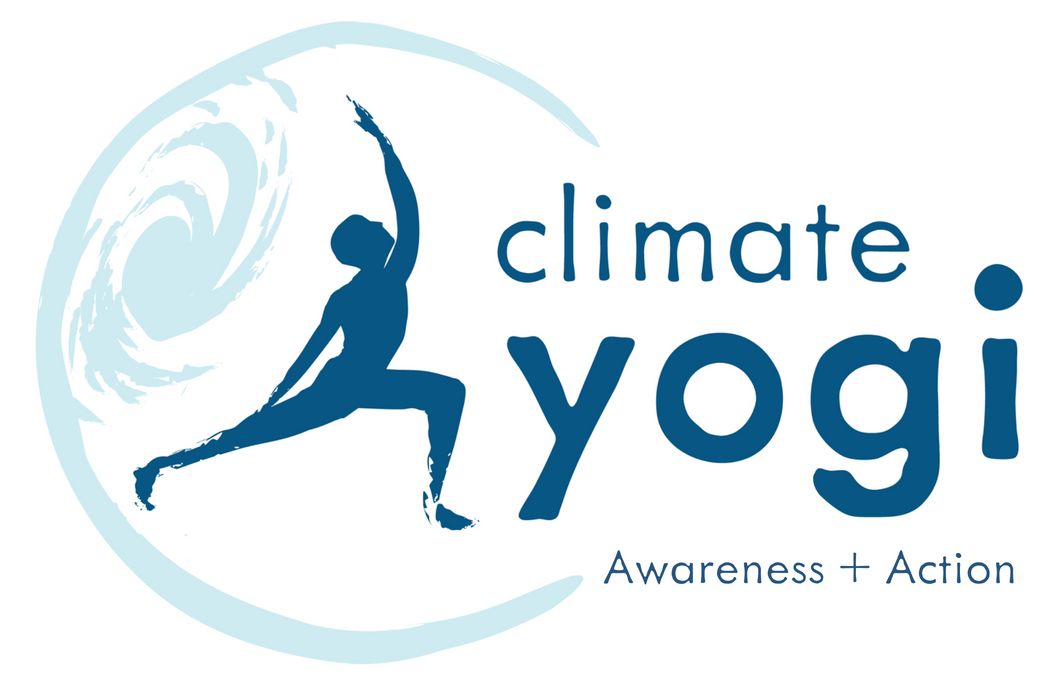Wild+Well Home Practice
Kelsey Desmond, ClimateYogi Guest Blog Contributor
The Practices
I fell in love with a ginkgo tree two years ago. I was at the US National Arboretum in Northeast DC, taking part in a Full Moon Forest Bathing session. We howled at the moon to mark the end of our meditative invitations, and danced and moved through the lawn of the Arboretum bathed in light. I felt so grateful to connect with a tree spiritually, to have the time to dwell with another living being.
This practice of forest bathing, or shirin yoku in its original Japanese, capitalizes on the healing benefits of spending time in nature. I am sure many of us know instinctively that being outside gives us clarity, and makes us calmer, and happier. There is scientific evidence to support these instincts, even. The Association of Nature and Forest Therapy has collected an increasing body of work that suggests that spending time with nature has a number of health benefits, including reduced stress, stronger cardiovascular systems, and boosted immune systems.
Working in urban forestry, I can certainly attest to the benefits I feel working outside for much of my job, as well as connecting with others who love trees and our earth. Another healing practice began to take shape in my life. I have practiced vinyasa yoga for almost 10 years, and love that it encourages me to move with freedom. Of course, my body called for a gentler movement practice to complement the high-octane flows of vinyasa. Restorative Yoga is a gentle, healing asana practice, where practitioners hold postures for 5 to 20 minutes while fully supported by props. Restorative Yoga happens in deep tissues of the body, and for our nervous system as we transition from “fight-flight-or freeze” to “rest and digest.” Our bodies and mind crave rest and quiet. This practice has welcomed me home to myself over and over through the years.
I was in a Restorative Yoga Teacher training last fall, dreaming in a supported reclined butterfly, when a fully formed workshop came to me: a forest exposure session coupled with an hour of restorative yoga. I was so excited to share a Wild+Well experience with my DC yoga community. I wanted to bring together two parts of my life that bring me such joy and healing.
Why Wild+Well Online?
I created the Wild+Well Toolkit out of necessity in a COVID-19 inflicted reality. While it is devastating the ways in which we have had to alter our lives, I hoped to offer a healing practice that connected people with their bodies and the nature near them. Of course, I love vast wilderness areas, be it forest or mountain or waterfall. However, what I love most about my work is that I remind people that nature exists here in urban settings, and that it can be healing to us, too.
When I work with children in DC, one of the most precious and sacred moments I get to share with them is when they tell me that nature makes them feel “amazed” or “calm.” Some city dwellers truly feel uneasy or afraid in a naturalized space, even in the bounds of an urban area. I cannot tell you have many DC residents-kids and adults alike-I have had to walk off the metaphorical edge when they are in a park space and see a bee or a bird. I am not always successful in assuring these folks that they are safe outside, but have been plenty of moments where I watch someone move from uncertainty to wonder.
The Toolkit
This toolkit is comprised of three parts. The first part is right from ClimateYogi! I was so inspired by my ClimateYogi teacher training this spring, that I incorporated the Earth Care Meditation into this toolkit. The meditation is meant to set your stage for the other components of the practice. Meditation grounds us, makes us aware of our bodies. This meditation in particular connects practitioners with the Earth, and right action needed to care for special places.
The second part is a series of invitations for connecting with nature near you. This can be on a short walk in your neighborhood, or seated near a window. This practice is meant to alight to the idea that we can experience nature even as we stay home, and that this experience can be beneficial to our health.
Finally, the third part of the series is a short restorative yoga practice. There are only four poses-including savasana! This practice is meant to ground and quiet our bodies and mind. Maybe you’ll fall in love with a tree by you, or learn its story. I hope you enjoy this practice, your body in this place, and the nature near you.
If you enjoy the practice and are able financially, please consider a donation to my Venmo account (kdes621) or to Paypal ( paypal.me/kdes621). A $5 donation is suggested. Thanks, Kelsey
Kelsey began her yoga journey at the George Washington University in 2012 as a way to practice back health care and to manage the stress of being a student. In the years since she began her practice, she discovered the physical, mental and emotional benefits of yoga through her now beloved arm balance practice and meditation. There was a magical part of the yoga practice that astounded her most: her inherent wholeness. When she is not on the mat, Kelsey is pursuing her love for the natural world and education. Kelsey serves as the Youth Programs Coordinator at Casey Trees, a DC-based urban forestry non-profit. She creates wholesome and evocative outdoor experiences for youth in DC so they are inspired to care for their environment.



